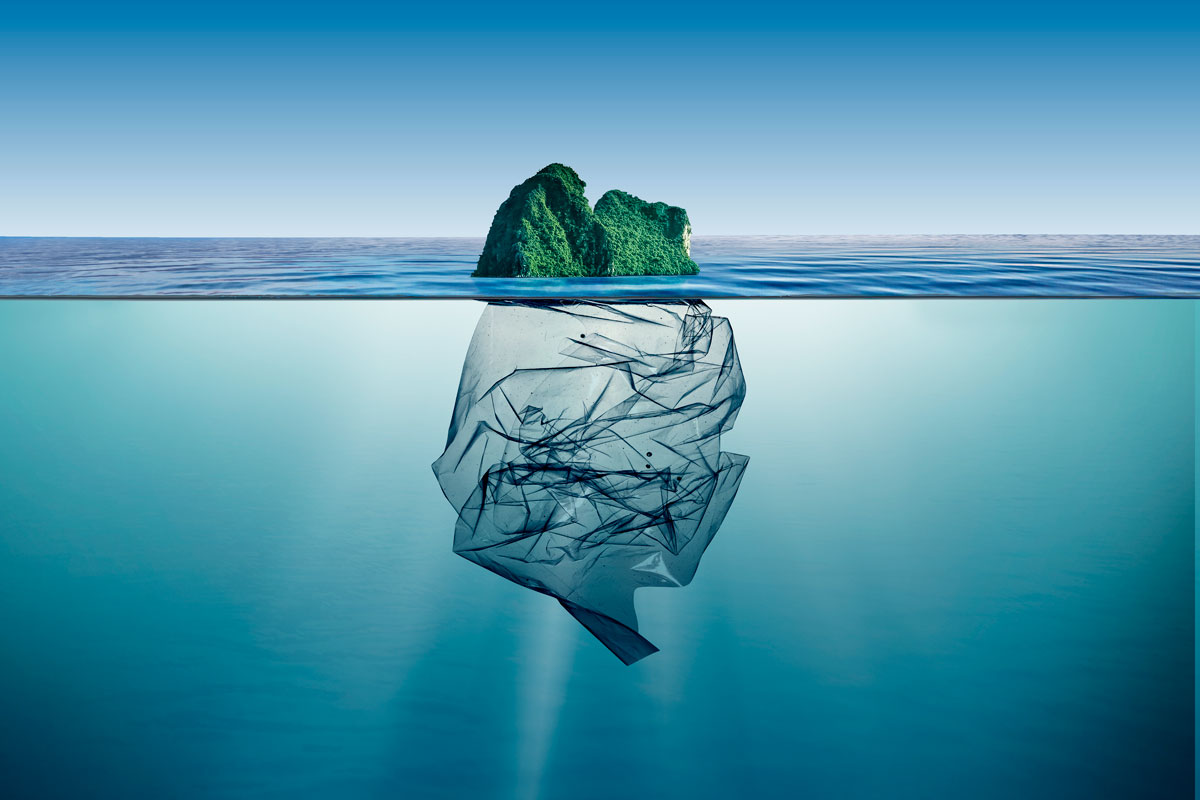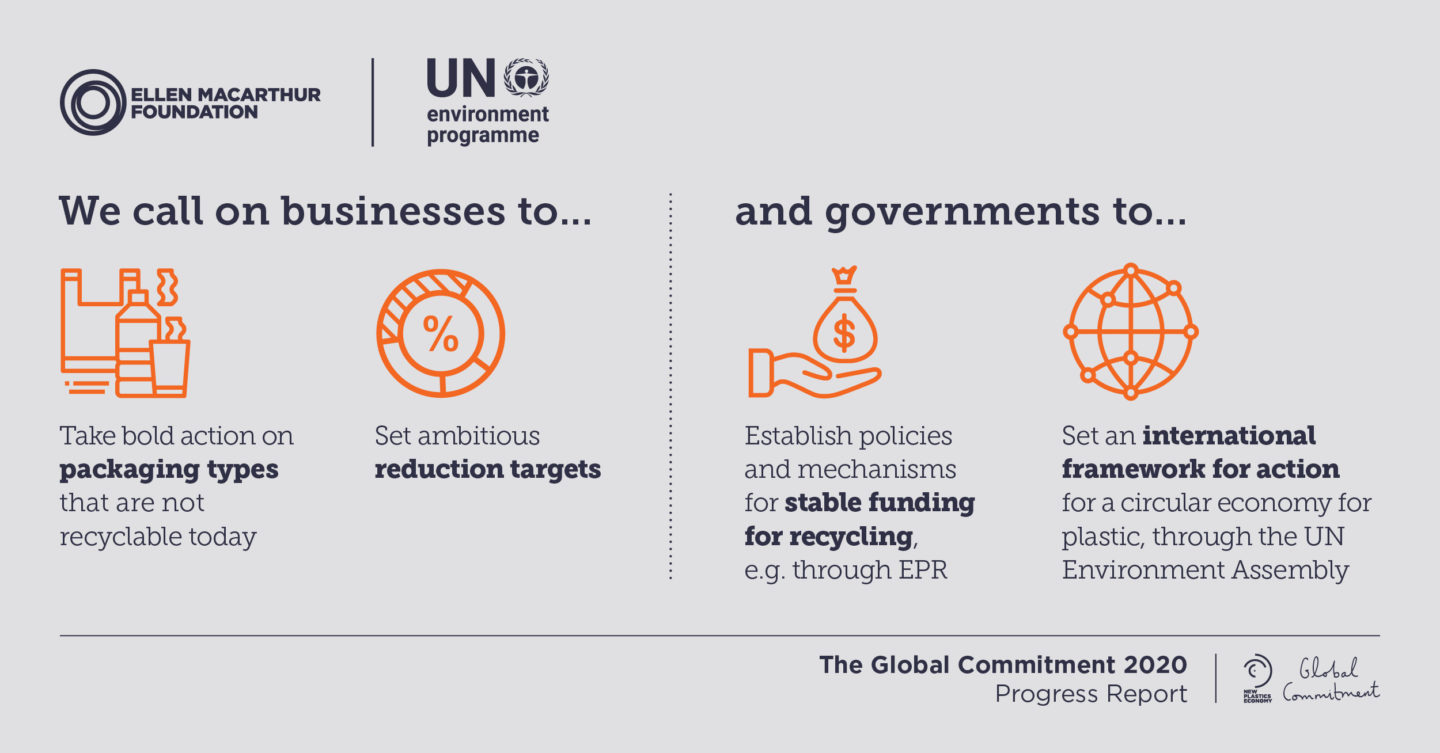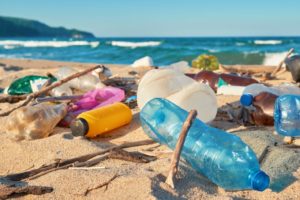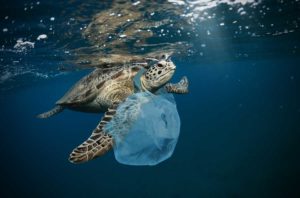Plastic pollution: a global agreement – the New Plastics Economy Global Commitment – supported by Etica Funds and hundreds of entities including businesses, public bodies, associations and NGOs, calls on all stakeholders to reduce plastic packaging and eliminate the problem at source.
In early November, two years after the signing of the agreement , the second annual “New Plastics Economy Global Commitment 2020 progress report” was published.
Plastic pollution numbers
Researchers estimate that more than 8.3 billion tonnes of plastic have been produced since the 1950s. About 60% of this amount has ended up in landfills or, even worse, in the environment.
More than 99% of plastic is made from chemicals derived from oil, natural gas and coal – all non-renewable resources. At this rate, by 2050, a 20% portion of world oil consumption could go into manufacturing plastics – much of this material is then released into the environment.
A commitment by 400 organizations against plastic pollution
By signing up in 2018, the organizations pledged to implement actions to:
- eliminate plastic packaging when problematic and unnecessary;
- innovate the production process by ensuring that all plastic packaging is 100% reusable, recyclable or compostable.
UNEP and the Ellen MacArthur Foundation thus aim to build a common vision of a circular economy to help reduce plastic pollution and safeguard our oceans.
The goals of the Global Commitment
The goals introduced in the New Plastics Economy Global Commitment are scheduled to be reviewed every 18 months and shall become increasingly ambitious. The Ellen MacArthur Foundation and UNEP have established three pillars.
Eliminate all problematic and non-essential plastic packaging by switching from single-use to reusable packaging models.
Innovate to ensure that by 2025, all plastic packaging can be safely reused, recycled or composted.
Make the plastics economy circular by significantly increasing the amount of reused or regenerated material in new products.

Two years after the first results of the global agreement
The report, published two years after the signing of the commitment, shows significant progress in two key areas:
- the use of recycled content in plastic packaging
- the gradual elimination of components commonly identified as problematic, such as PS and PVC packaging, undetectable carbon pigments, and single-use plastic bags and straws
On the other hand, limited progress has been made in increasing the recyclability of plastic packaging, reducing single-use packaging and switching to reusable packaging.
Significant differences were also detected in progress made by the various Global Commitment signatories: some countries have taken great strides forward, but others have made little or no progress towards agreed targets.
The report highlights the various degrees of progress made by companies, public bodies, associations and NGOs but asserts that efforts must be stepped up to reach the 2025 targets. Appeals are therefore being made to companies and governments to eliminate plastic pollution.
Companies are asked to set ambitious targets for reducing non-recyclable packaging, to develop credible roadmaps and undertake bold actions.
Since voluntary action by industry is not sufficient to achieve the targets, governments are asked to:
- establish policies and funding mechanisms for the collection and sorting of plastics, through fair industry contributions;
- establish a global directorate and create a framework for international action through the United Nations Environment Programme (UNEP) to develop a circular economy for plastics.
“The report shows how some governments have taken action through a blend of producer responsibility, tax incentives and public procurement policies,” explained Ligia Noronha, Director of UNEP’s Economy Division. “We call on all governments to follow their example and unite globally, through the United Nations Environment Assembly, to work on an international framework for action and build from a vision for a circular plastics economy.”

More information at www.newplasticseconomy.org
Please read the Notice.





